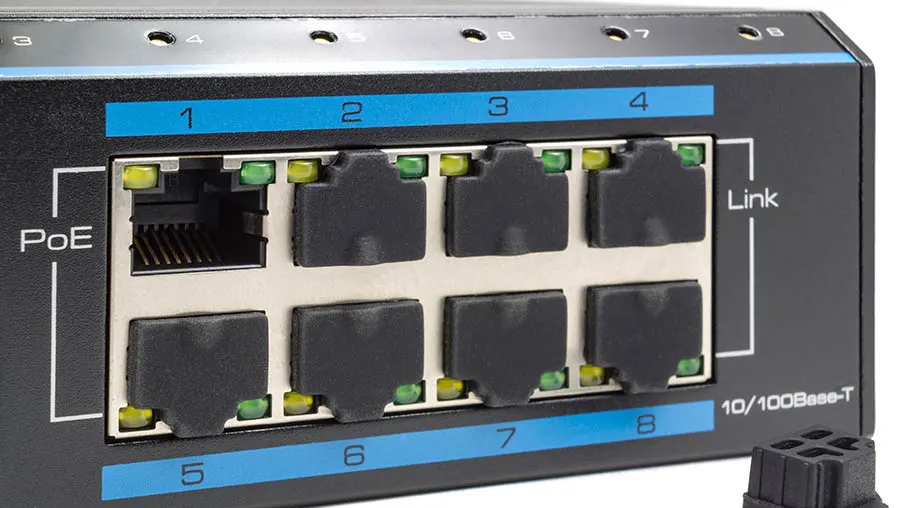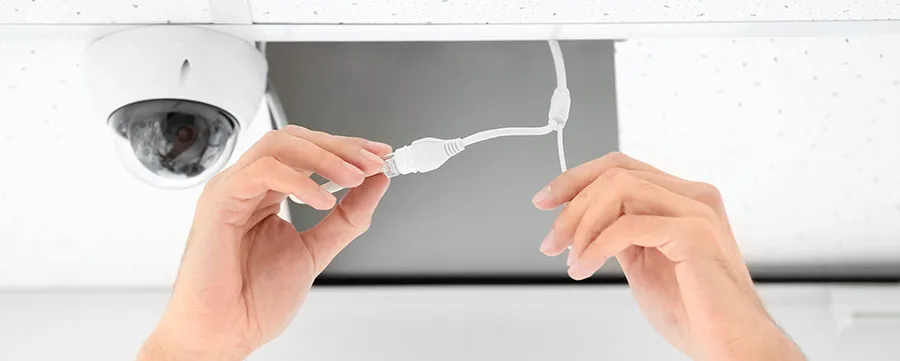PoE has become an essential tool for powering not just security cameras but a whole range of network devices. Having a system based on PoE means you not only get the convenience of using a single cable for data and power but are also less dependent on power outlets for installations. Obviously, this will save you a lot of time and headache.
PoE can be used for a lot of different network devices. Not only that, but different PoE power ratings can support other devices by increasing power usage. PoE can support cameras, telephones, and even higher-power users like specialized monitors.
If you’re using a PoE based system, you may be wondering what kinds of devices your system can support. This will all depend on what type of PoE power rating you are using. You may have already explored what PoE is and have an understanding of this technology and how it can benefit your network devices.
What are the PoE Power Ratings?

Over the years, Power over Ethernet has become popular as a single system for power and network access. Advances and adoption of PoE mean this tech supports more and more devices. As PoE becomes more advanced, so do the power needs. This is why there have been developments for the support of more power-hungry devices. To understand the differences in all the different PoE ratings in addition to the various devices that utilize the technology (our tutorial), let’s take a look at the ratings:
- PoE Standard – This is what most systems will be using. This power rating supports devices with up to 15.4 watts. It uses IEEE 802.3af power standard. PoE Type 1 can support all kinds of meters, VOIP phones, and wireless access points as well as stationary cameras, or cameras that don’t tilt or pan.
- PoE Plus, PoE+ – PoE Plus bumps up the wattage available to devices to around 30watts. This rating uses the IEEE 802.3at. Additionally, PoE is known for having backward compatibility, which means it can usually support devices that normally use PoE Type 1. It’s not uncommon for PoE Plus to provide 30W of DC power for each port, and 25.5 for devices.
- PoE++/Type 3 – This rating can support devices that use up to 60 watts. IEEE 802.3bt is the standard used here. PoE++, or PoE Type 3, is great for video conference calls as well as for creating other management systems. PoE++ can provide approximately 60W of power to each port, and around 51 watts for each device.
- PoE++/Type 4 – The current maximum power rating, this can support up to 100 watts of power usage. Type 4 also uses IEEE 802.3bt. In addition to supporting devices like TVs and laptops, PoE Type 4 can provide around 71 watts of power for each device. Put simply, PoE++ is for systems that need more power. Systems like a fast food franchise’s point-of-sale computers can run off just one cable with this, which is just one example of how PoE monitors and computers are enabled by the added power.
How PoE Uses Ethernet, and Length Limitations (300ft)
To understand better how these power ratings make use of the PoE system, you need to know how it uses an ethernet cable to transfer power, and it wouldn’t hurt to understand how this relates to laptops (our guide) as well. Ethernet cables contain four sets of twisted copper wire pairs. For PoE standard and PoE +, only two of these wire pairs are utilized to transfer power. The other two transfer the data over the network. With the higher PoE rating, all four of the twisted pairs are energized to transfer power.
The limitations of all types of PoE when it comes to distance are also worth mentioning. While some ratings offer more power, they all have limited the inherent properties of transferring power over a cable. All PoE systems will have a limitation of around 300 feet without needing extra power for operation.
What Kind of Devices Use PoE?

Now that we have an understanding of the different power ratings for PoE, we can have a look at the types of devices that are used for each rating. Keep in mind that just because a device fits into the desired power usage rating does not necessarily mean it is fit for PoE usage. Non-PoE devices on a PoE network can get damaged if the power is not managed correctly.
Here are some devices you can use on PoE networks:
- PoE Standard – IP Cameras, VOIP Telephones, Wireless Access Points (With two antennas), Switches, Powered Audio.
- PoE Plus – IP Telephones, Alarm Systems, PTZ Cameras, Motion Tracking Cameras, Remote Computer Terminals, Biometric Sensors.
- PoE ++ (Type 3) – Video Telephones, Thin Clients (Small Computer), Door Access Systems.
- PoE ++ (Type 4) – Different Monitors (LCD/Computer), Point of Sale Systems, Larger Displays, Some Laptops.
As you can see, there are lots of different devices that can be incorporated into your PoE based system. Keep in mind what kind of power usage your devices will need. This will determine which of the PoE power ratings you should use.
Should You Just Get the Highest Power Rating?
It all depends on what type of devices you intend to have on your system. If you are only using IP cameras or VOIP phones, like the ring-U Hello Hub (on Amazon), you can probably manage with a PoE standard-based system. If you want to set-up a more robust and expandable system, you might consider using a higher PoE rating, like PoE +.
The higher PoE ratings come at a higher price, so consider whether or not you are willing to shell out the extra cash on installation. You might also consider the lifespan of your devices and your system. As we’ve stated in our other article, most PoE switches only last about five years, so that means you might be needing an upgrade sooner than you think.
Imagine what kind of devices that may be needed in the next ten years. Do you think that you might be using video conferencing or thin clients in the future? If so, saving yourself the headache now and upgrading is a good idea. But If you already have a PoE standard-based system, you might not need to upgrade.
Depending on how many devices you will be using that need the extra power, you might be able to piece together solutions as you go. You can also substitute PoE Power Injectors, such as the Cudy Gigabit (on Amazon) when needed to support more power-hungry devices.
Final Thoughts
Now that you know more about PoE, the different ratings, and all the devices you can use, setting up your system for multiple types of devices should be possible. Always make sure you are using the right equipment for the job and consider your future needs, and you should be setting up a robust system that can work for years.
